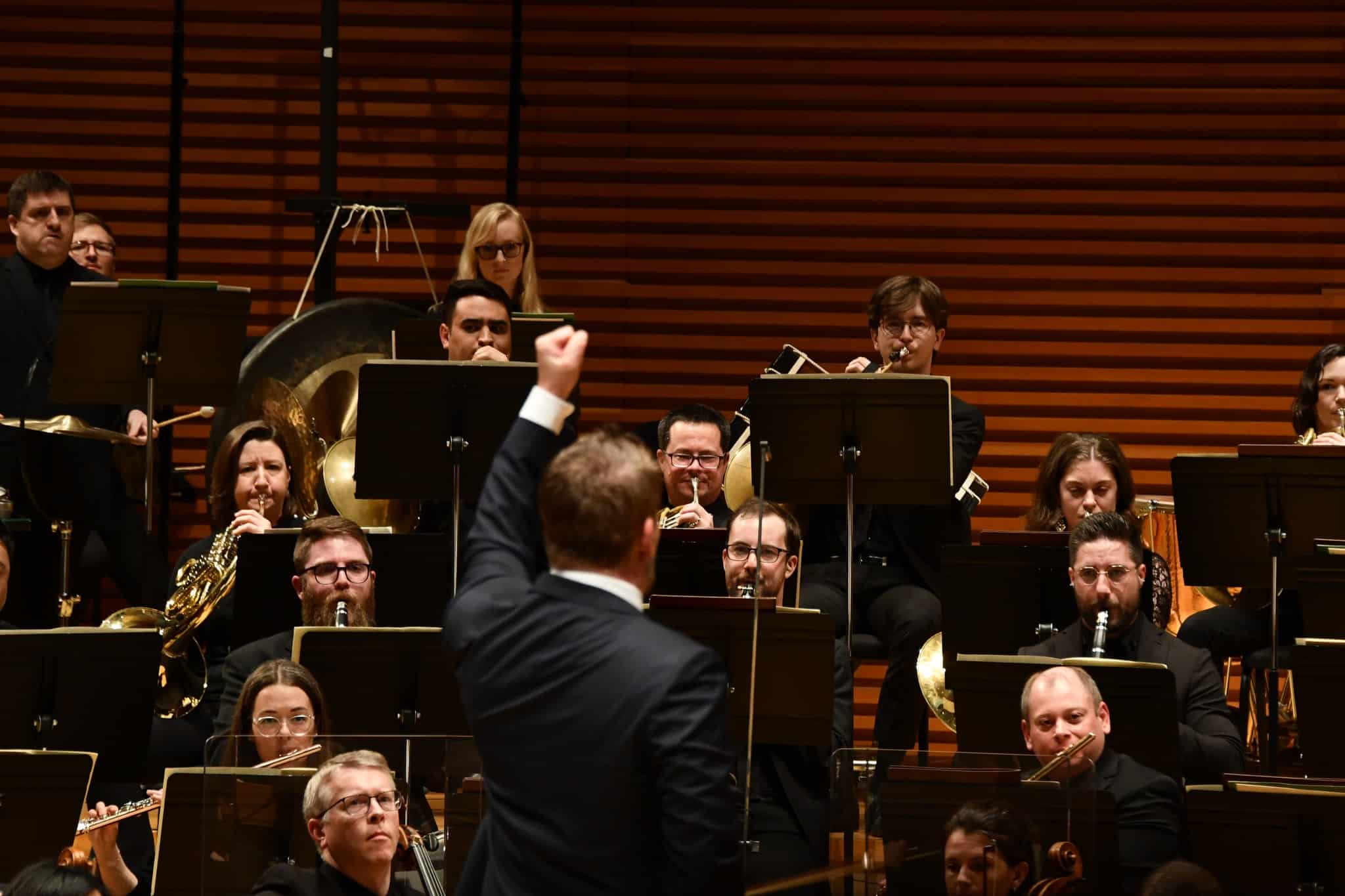WHAT WE SAW AND HEARD
At the end of the final work this weekend (March 3, 4, 5), Scriabin’s “Poem of Ecstasy,” the ultimate in tension and release is achieved. The orchestra builds over a long, slow crescendo to a massive earth-shaking sound with 9 horns and 80 others blasting at full strength on a chord that your brain desperately, most desperately, wants to resolve. But instead of resolution, the whole things abruptly stops in a moment of total silence, as if you’ve walked to the edge of a cliff and are then leaning out and peering over the edge into depths of dark nothing. The silence lasts for ages, holding the audience in this glimpse into an uncertain void. Surely the entire room is holding their breath, because every being is completely still and silent.
And then, finally, the orchestra starts a build from nothing all over again, allowing us to breathe once more. But this time the organ fires up to join. Now the entire concert hall literally begins to shake as if it is about to break loose from its foundation and slowly ascend into the sky. Everything gets bigger and bigger and bigger, tension grows to an untenable point, and now, only now, it resolves into the biggest most wonderful c-major chord you’ve ever heard in your life.
A lucky young couple was sitting in the front row of the choral loft for these moments, getting the full-frontal impact of the rear-facing bells of the nine horns, with the rumble of the massive pipe organ just feet behind them. The woman was visibly losing it, transcended from reality and completely overwhelmed with emotion (ecstasy) in this grandest of experience. You have to sit and listen to a piece for a long time to achieve this maximum impact; we have to build you up to it – you cannot just fast-forward to the good part. You have to wait for it.
The young lady last night received a unique high that nothing else on earth can provide.
